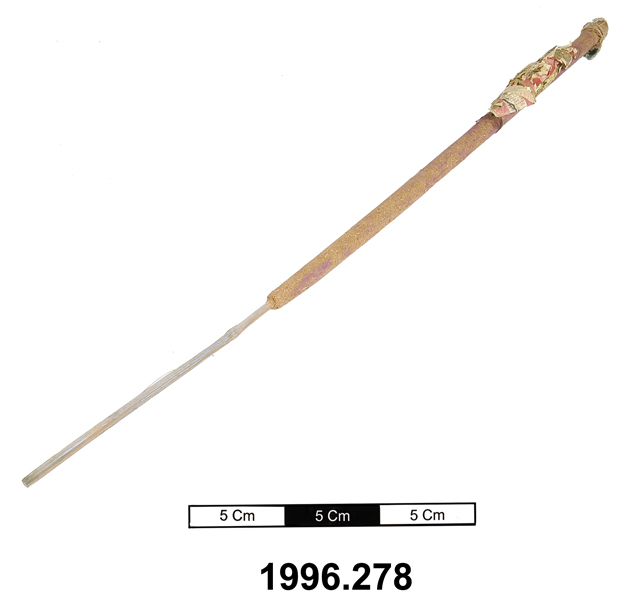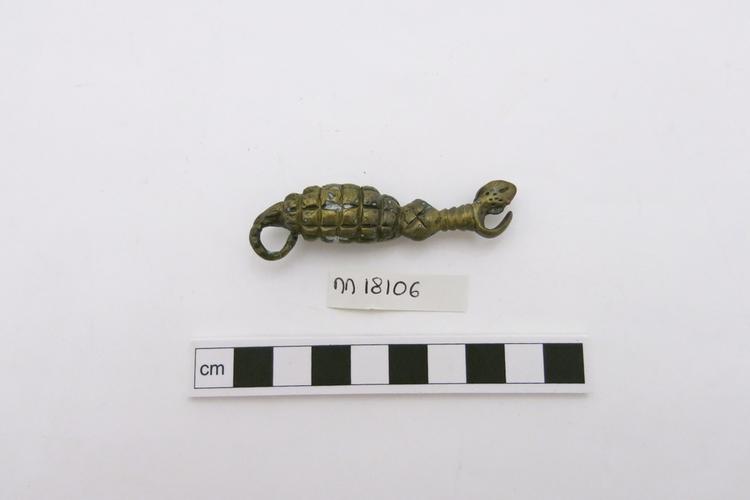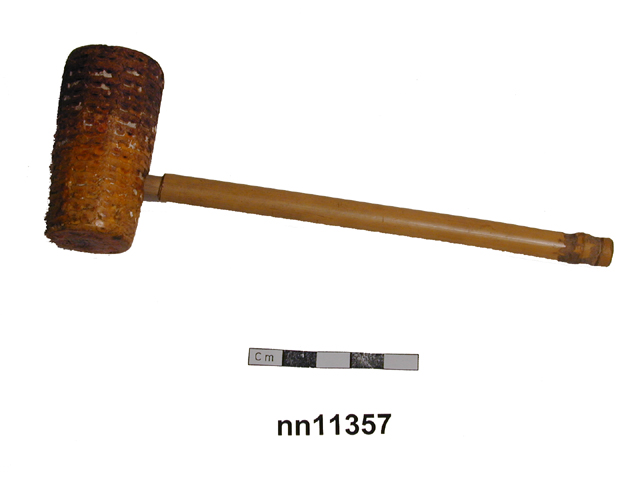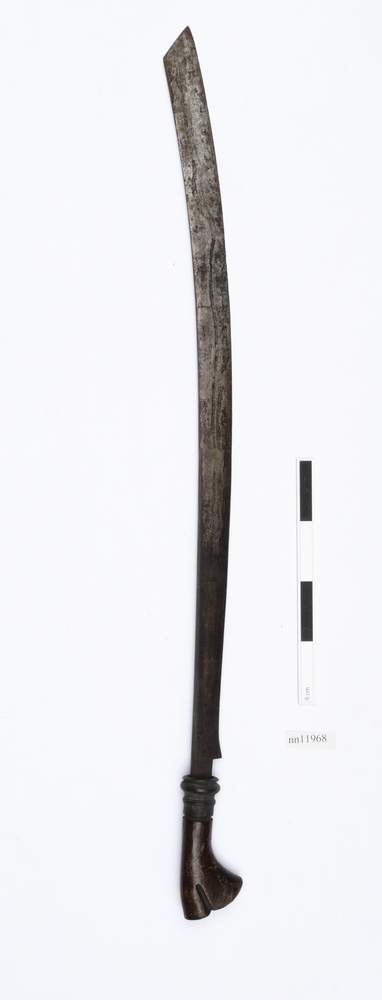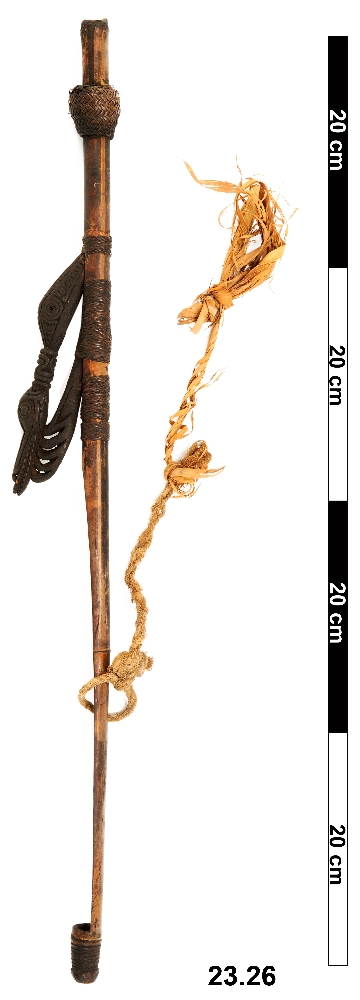
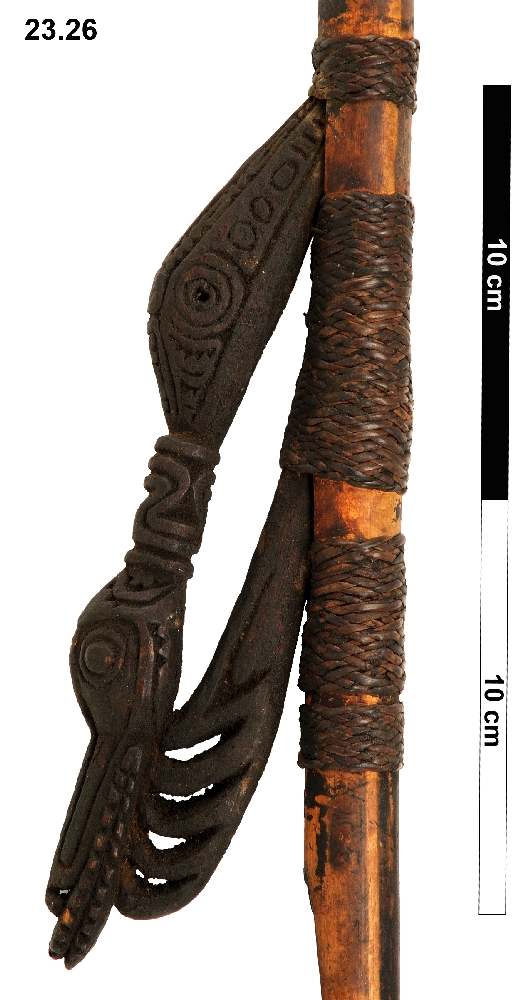
Bamboo spear thrower with a carved wooden bracket in the form of an animal, probably a crocodile head. There are bands of raffia around one end, which are sealed with resin. The spearthrower has a plaited vegetable fibre and textile strap.
Spearthrower, Manam Island, Sepik River Coast, Madang Province, Papua New Guinea. Although it was not known elsewhere on the island, the spearthrower was in use throughout the Sepik-Ramu river system that drained much of northern Papua New Guinea. This particular example comes from the volcanic island of Manam off the northern coast of New Guinea at the Sepik’s mouth. In the Pacific as a whole, this secondary weapon was largely restricted to Australia and (in rope form) New Caledonia, and some scholars have suggested an Australian origin for the Sepik Spearthrower. There are a number of reasons to prefer an interpretation of independent invention for the spearthrower in New Guinea, however. There are two basic kinds of spearthrower: ‘male’ ones which have a peg that fits into a small recess in the butt of the spear, and ‘female’ ones which have a larger recess that the entire spear butt sits in. While all Aboriginal Australian spearthrowers are of the male type, this New Guinea spearthrower is of the female type. Another unique feature of the Sepik River spearthrowers is the little carved wooden board socketed into the shaft half-way along its length. This board takes a different form in different societies, and in this Manam Island example provides a nice bird-like carving typical of the wider Sepik style. However, such boards are not purely ornamental, as they lean over to one side, and provide a support to guide the spear shaft as the warrior or hunter launched it. Bamboo, wood, vegetable fibre. Early 20th Century. Formerly in the private collection of Mr Frank Hanlin.



